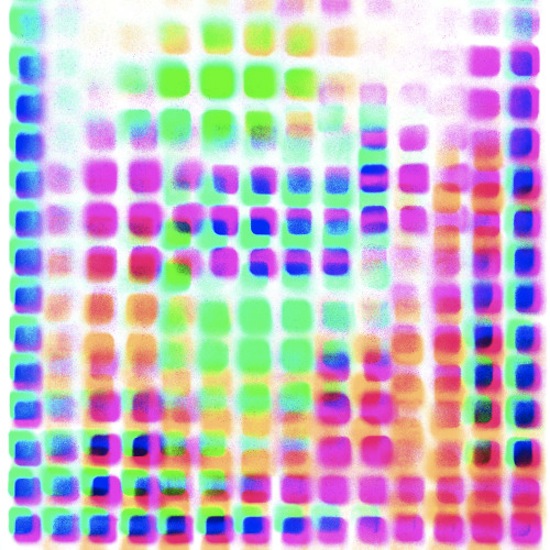One of the earliest documented investigations of boredom as psychological phenomenon was by Victorian polymath Francis Galton. He noted the effects of extreme ennui attending a public recital in London in the early 1880s. Stood at the back of the room, Galton was struck by the degradation in atmosphere as the reader at the lectern droned ever on.
"When the audience is bored," he wrote," the several individuals cease to forget themselves and they begin to pay much attention to the discomforts attendant on sitting long in the same position. They sway from side to side, each in his own way."
There’s a nightmarish, Body Snatcher quality to Galton’s account, published in an 1885 edition of Nature under the title ‘The Measure Of Fidget’. The participants were not merely prisoners to tedium. They seemed spiritually possessed by their boredom, half devoured by it. Stultification had altered the contours of their universe.
The walls of reality similarly bend and shimmer as the listener plunges into the interlocking dronings of Tokyo noise trio Nisennenmondai. Here the "fidget" takes on a transcendental aspect as the band employ recurring motifs and time signatures as a conduit to spaces dark and feverish.
A swooning spareness informs the group’s delvings. That’s truer than ever on new album #N/A, where krautrock fugues melt into free-form grooves that have an almost techno quality. Make no mistake: such prettiness is merely a byproduct throughout a project where hypnotic relentlessness is the raison d’être. The listener can opt to be pummelled into acquiescence or swept contentedly along. Either way, this is a collection that insists you submit, allow the music convey you to destinations unspecified.
In her book On Repeat: How Music Plays The Mind, academic Elizabeth Hellmuth Margulis argues that repetition – a guitar note swirling into the horizon, a tempo that chugs past like a freight train – impacts on the senses in a way other musical forms do not.
"Music takes place in time but repetition beguilingly makes it knowable in the way of something outside of time," she writes. "It enables us to look at a passage as a whole even while it’s progressing moment by moment. But this changed perspective brought by repetition doesn’t feel like holding a score and looking at a passage’s notation as it progresses. Rather it feel like a different way of inhabiting a passage – a different kind of orientation."
"A different kind of orientation" is a descriptive that might be applied to Nisennenmondai’s rhythmic drone-pop – music that seems to stretch toward the forever until, as per Margulis’ diagnosis, conventional concepts of time and perspective fall away. On #N/A’s starkly titled ‘#1’ and ‘#5’, for instance, cadences uncoil ad infinitum, guitar fragments twitching and shimmering endlessly.
Written down, this sounds like no fun at all. Yet Nisennenmondai’s intensity is leavened with self-awareness, a point forcefully communicated throughout #N/A. Though billed as a collaboration with dub producer Adrian Sherwood, the LP feels like the distilled essence of what the group, formed in 1999, stand for: a mash-up of high seriousness and a twitchiness that almost verges on dark humour. Nisennenmondai have repurposed music as a conversation with the concept of infinity. When you’ve got all the time in creation, what’s the hurry?
This duality is conveyed most strikingly on ‘#2’, where Masako Takada’s fretwork and Yuri Zaikawa’s slow-broil bass ratchet up the starkness, beat piled upon beat so that listener may feel they have tumbled into the Japanese art-pop equivalent of a Victorian hall of mirrors. And then, like a knife in the dark, a snare drum kicks in – a simple upshift that goes of like an incendiary. It is the only moment where three piece, augmented by Sherwood’s subtle production, draw on the more dynamic energies of 2013’s N – a relatively approachable affair that remains the recommended entry point for newcomers.
If N was the catchier record – in so far as wailing art rock can be described as "catchy" – the follow-up communicates a purer world view. The music builds and builds but there is no satisfying climax at the death – with one or two exceptions, the tempo never alters. Those anticipating a dopamine kick of riffs or chugging beats as payoff will likely be underwhelmed. In that regard, #N/A hews to the fundamentals of minimalist composition. Doctrinally, it is a strikingly orthodox work.
"Like so much non-western music minimalist pieces do not drive towards climaxes", argued K Robert Schwartz in the introduction to Minimalists (20th Century Composers). "They do not build up patterns of tension and release – and do not provide emotional catharses. They demand a new kind of listening, one lacking in "traditional concepts of recollection and anticipation" as [Philip] Glass has put it."
The question around which #N/A dances is whether there is a point at which blissful ennui bleeds into the sort of spacial boredom Galton identified in the ‘Measure Of Fidget’. "Repetitive" has, in popular western parlance, acquired a pejorative quality. When you tell someone they are repeating themselves, you’re not exactly paying a compliment are you?
In Nisennenmondai’s case, the divide between hypnotic and enervating is frequently indistinct. But that is no slight – if halfway through the whirlpool percussive shuffles of ‘#4′ one’s commitment starts to dwindle, musings drifting into vapour, what of it? Such a response merely completes the circle on Margulis’ thesis that repetition places unique demands on the listener – in effect, requires them to become active interlocutors in the usually passive experience of engaging with music. "It invites us into music as imagined participants," she writes, "focusing on different aspects in each new listen."
This sort of mental free-drift has its own distinct rewards, as testified by the ongoing deluge of ASMR (autonomous sensory meridian response) internet relaxation videos, in which people post "role-play" clips of themselves performing workaday tasks. Sifting through YouTube mini-epics with titles such as ‘Simple Sounds And Soft Whispers’ (two million views) and ‘Gentleman’s Suit Fitting Session’ (five million views) will quickly disabuse one of the notion that concocted boredom does not have a niche – or that its impact cannot be profound.
While it may seem ludicrous at first pass to compare a challenging minimalist album to YouTube footage of a woman pretending to polish your nails, the impact can be curiously similar. In both instances, repetition weaves a spell, drilling into zones of the id conventional musical forms do not reach. Nisennenmondai will fill your head with strange, billowing thoughts as their compositions sprint towards infinity. Approached in the correct spirit – principally an understanding that this is music that will ask questions rather than provide answers – their conjurings are irresistible.




